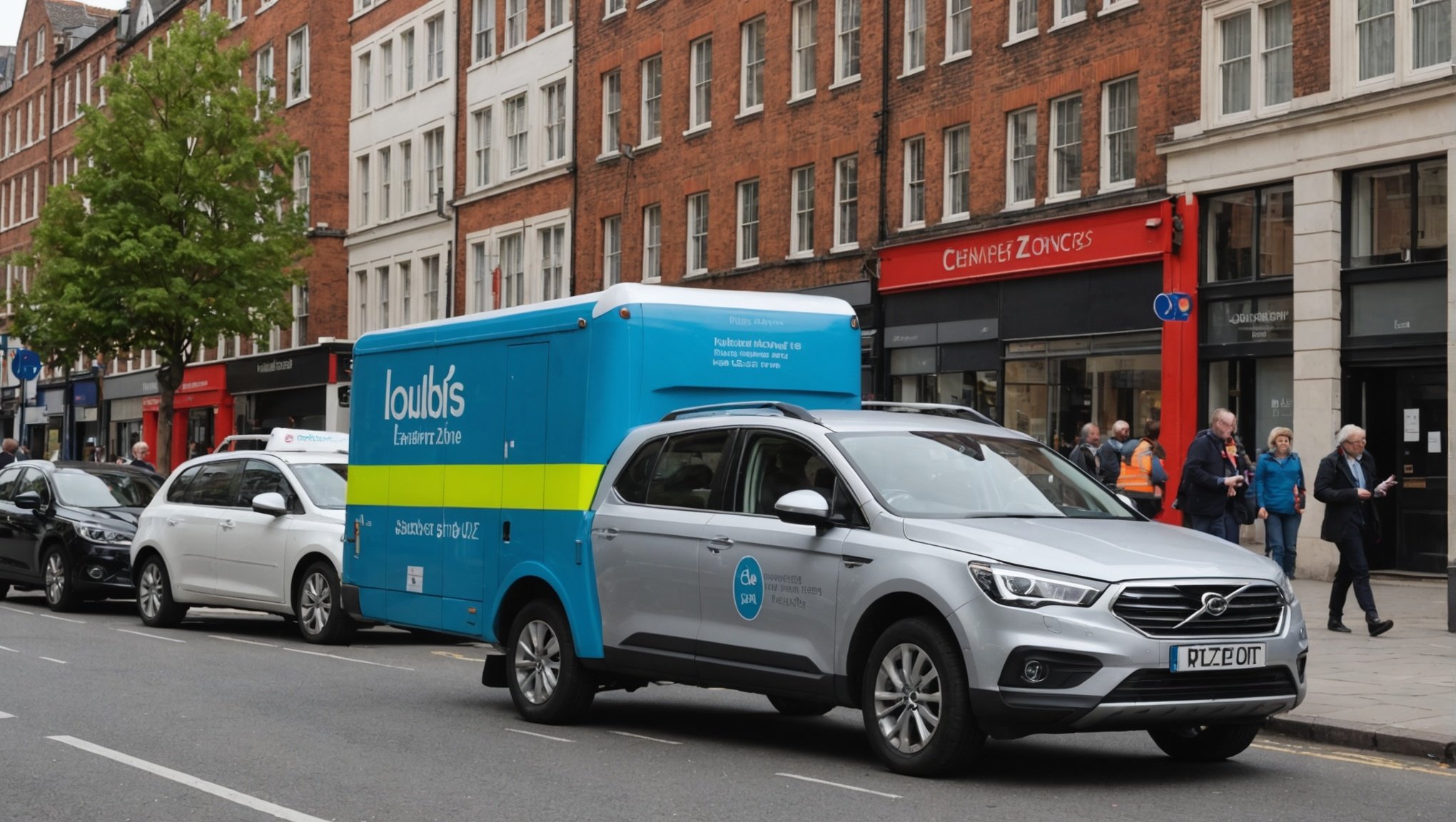Low Emission Zones (LEZ) in the UK present unique challenges for drivers of older vehicles. Understanding these regulations is vital to avoid hefty fines and ensure compliance. This guide offers practical insights, from assessing your vehicle’s emissions to exploring potential exemptions and grants. Whether you’re a daily commuter or a vintage car enthusiast, embracing these changes can lead to greener driving habits while preserving your beloved wheels. Equip yourself with the knowledge to navigate these evolving landscapes effectively.
Understanding Low Emission Zones (LEZ) Regulations
Low Emission Zones (LEZ) are designated areas within the UK where vehicle emission standards are enforced to reduce pollution. These zones aim to improve air quality by restricting access to vehicles that do not meet specific emissions criteria. The UK LEZ regulations primarily target older vehicles, which tend to emit higher levels of pollutants.
This might interest you : Evaluating Car Brand Reliability in the UK: A 2023 Guide
The purpose of LEZ regulations is to encourage the use of cleaner vehicles and reduce the environmental impact of road transport. By implementing these zones, cities aim to decrease harmful emissions, leading to healthier urban environments. The regulations set forth within LEZs require vehicles to comply with strict emission standards to enter these areas without incurring penalties.
Key regulations affecting older vehicles include the requirement to meet Euro emission standards. Vehicles not meeting these standards may face charges or be prohibited from entering the LEZ. This incentivizes vehicle owners to upgrade to newer, less polluting models or retrofit existing vehicles to comply with the standards.
Also to see : Smart Strategies for Young Drivers in the UK to Slash Car Insurance Costs
The introduction of Low Emission Zones represents a significant step towards sustainable urban development, promoting cleaner air and a healthier population. By understanding and adhering to these regulations, vehicle owners contribute to a collective effort to combat air pollution and enhance the quality of life in cities.
Compliance Requirements for Older Vehicles
Navigating the intricacies of vehicle compliance within Low Emission Zones (LEZ) can be challenging, especially for owners of older vehicles. These vehicles face stringent regulations to meet the necessary emission standards.
Specific Requirements for Older Vehicles
Older vehicles must adhere to specific criteria to operate within LEZs without incurring penalties. Primarily, they are required to meet the Euro emission standards, which dictate the acceptable levels of exhaust emissions. Vehicles failing to meet these standards could face significant charges or even be prohibited from entering the zone altogether.
Emission Standards to Meet
The Euro emission standards are a set of regulations that define the permissible limits for vehicle emissions. For older vehicles, meeting these standards often means upgrading or retrofitting with approved technology that reduces emissions to acceptable levels. Compliance ensures that these vehicles contribute less to urban pollution, aligning with the goals of LEZs.
Documentation Required for Compliance
To prove compliance, vehicle owners must maintain accurate documentation. This typically includes proof of vehicle upgrades, emission testing results, and any certifications of retrofitting. Having this documentation readily available is crucial for avoiding fines and ensuring smooth access to LEZs. By understanding and fulfilling these requirements, older vehicle owners can continue to operate within these zones responsibly.
Modification Options for Older Vehicles
For owners of older vehicles, achieving LEZ compliance often involves considering various vehicle modifications. These modifications are essential to meet the stringent emission standards set by Low Emission Zones, ensuring that vehicles contribute less to urban pollution.
Possible Modifications to Meet LEZ Standards
Owners can explore several emission upgrades to align their vehicles with LEZ requirements. Common modifications include installing particulate filters, upgrading catalytic converters, or retrofitting engines with advanced emission control technologies. Each option has its own set of advantages and may vary depending on the vehicle’s make and model.
Costs and Benefits of Upgrading Vehicles
While the initial costs of upgrading vehicles can be significant, the long-term benefits often outweigh these expenses. Improved fuel efficiency, increased vehicle lifespan, and reduced emission penalties are notable advantages. Additionally, compliant vehicles can access LEZs without restrictions, enhancing mobility and convenience for their owners.
Resources for Finding Modification Services
Locating reliable modification services is crucial for successful upgrades. Vehicle owners can consult certified mechanics, automotive specialists, or official LEZ websites for guidance. These resources provide valuable information on approved technologies and service providers, assisting owners in making informed decisions about their vehicle modifications.
Steps to Ensure Compliance with LEZ
Navigating LEZ compliance steps is crucial for vehicle owners, particularly those with older models. To ensure a smooth entry into Low Emission Zones, it’s essential to follow specific guidelines.
Detailed Steps for Preparing to Enter LEZ
- Vehicle Assessment: Begin by assessing your vehicle’s current emission status. This involves checking if your vehicle meets the necessary Euro emission standards.
- Upgrade or Retrofit: If your vehicle falls short, consider upgrading or retrofitting with approved technologies to reduce emissions.
- Documentation: Gather all relevant documents, such as proof of modifications and emission test results, to demonstrate compliance.
How to Check Vehicle Compliance Status
Checking your vehicle’s compliance status is a straightforward process. The first step is to consult the official LEZ website or contact the local authority for the most accurate information. Enter your vehicle’s registration details to verify if it meets the required standards.
Importance of Keeping Updated on Regulations
Staying informed about older vehicle guidelines is vital, as regulations can change. Regularly reviewing updates from LEZ authorities ensures compliance and avoids potential penalties. This proactive approach helps maintain access to these zones and supports broader environmental goals.
Financial Implications and Support
Understanding the financial implications of Low Emission Zones (LEZ) is crucial for vehicle owners, especially those operating older models. Non-compliance with LEZ regulations can result in significant fees. These LEZ fees are designed to incentivize vehicle upgrades, ensuring that owners contribute to reducing urban pollution. The costs can be substantial, but they serve as a deterrent against using high-emission vehicles within these zones.
To alleviate the financial burden of compliance, various financial support options are available. Vehicle owners may qualify for vehicle grants aimed at facilitating the transition to cleaner technologies. These grants can offset the expenses associated with upgrading or retrofitting vehicles to meet the required emission standards. It’s advisable to explore these options thoroughly to take full advantage of available support.
In the long run, compliance with LEZ regulations offers notable financial benefits. Upgraded vehicles not only avoid hefty fees but also tend to have improved fuel efficiency and a longer lifespan. This translates into cost savings over time, making the initial investment in compliance more economical. By staying informed about financial support and understanding the long-term benefits, vehicle owners can make informed decisions that align with both environmental and financial goals.
Practical Tips for Navigating Low Emission Zones
Navigating Low Emission Zones (LEZ) efficiently requires careful planning and understanding of the affected areas. Utilizing LEZ maps is a crucial first step. These maps provide detailed information on zone boundaries and entry points, ensuring that drivers can plan their routes effectively. Many local authorities offer online maps or mobile apps that highlight LEZ locations, making it easier to avoid unexpected penalties.
When planning routes through LEZ areas, consider the following tips:
- Route Planning: Identify alternative routes that bypass LEZs if your vehicle does not comply with emission standards. This approach helps avoid fines and ensures a smoother journey.
- Time Management: Plan travel during off-peak hours to reduce congestion and emissions. This not only helps in adhering to LEZ regulations but also contributes to reducing overall urban pollution.
For owners of older vehicles, adopting best practices is vital. Regular maintenance, such as timely oil changes and engine checks, can help reduce emissions. Additionally, staying informed about LEZ maps and updates on affected areas ensures compliance and uninterrupted access to these zones. By integrating these strategies, vehicle owners can navigate LEZs more effectively, contributing to cleaner urban environments.
















